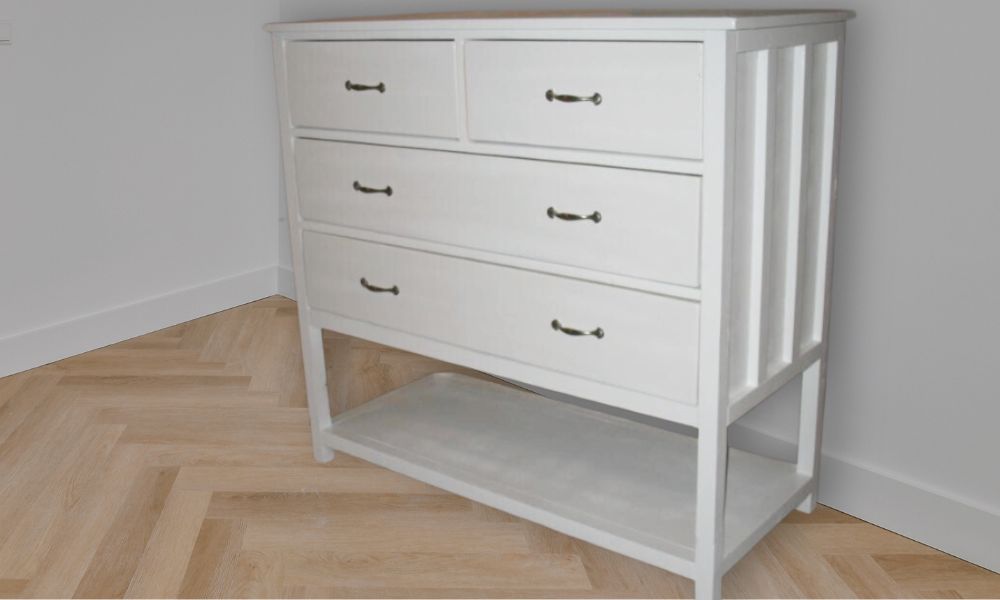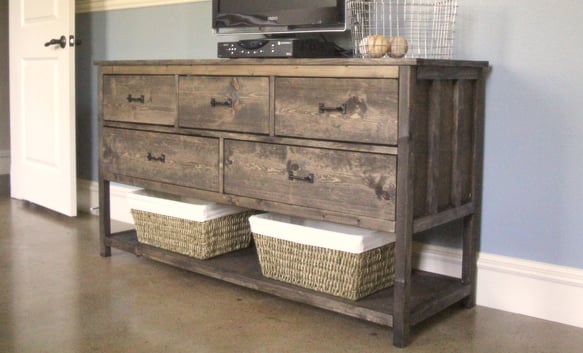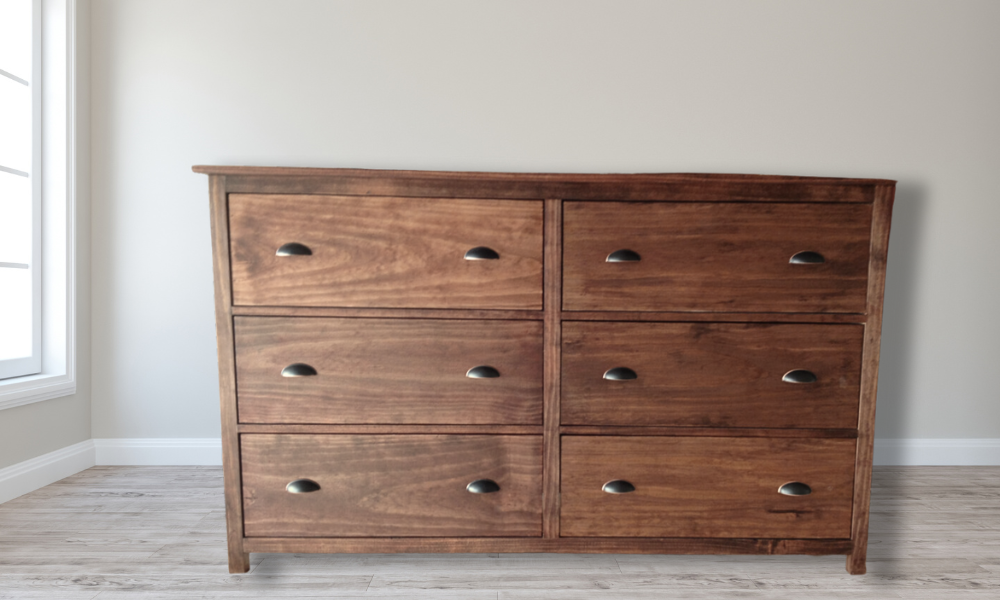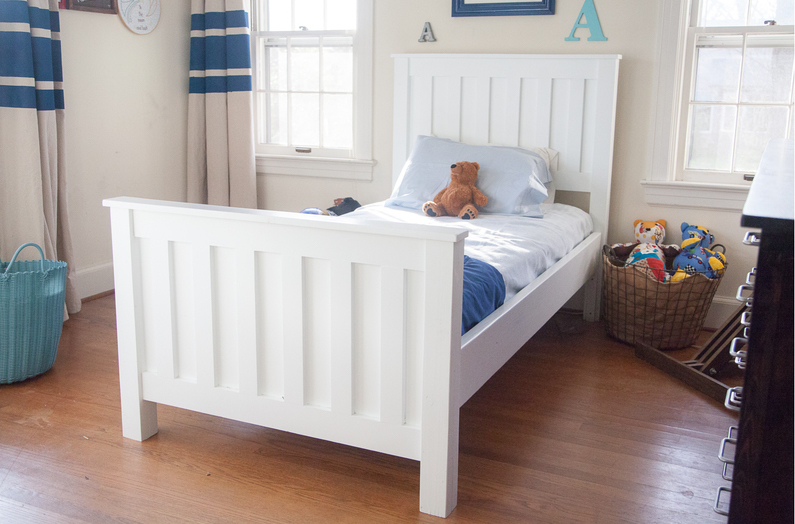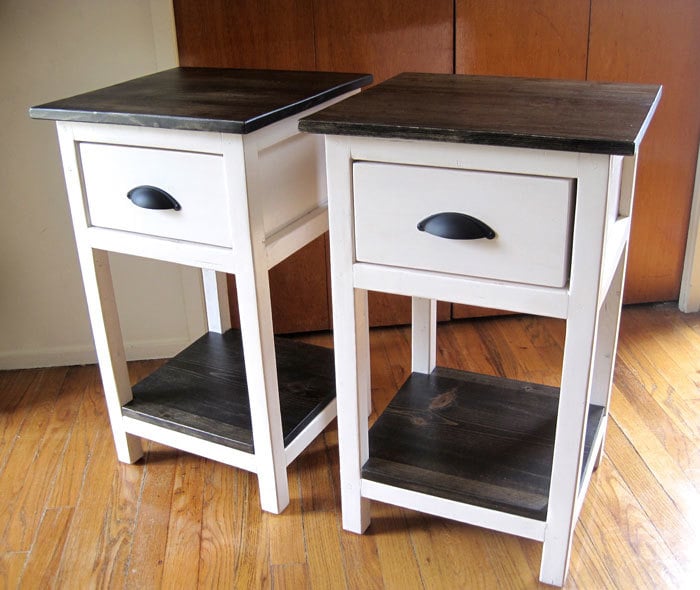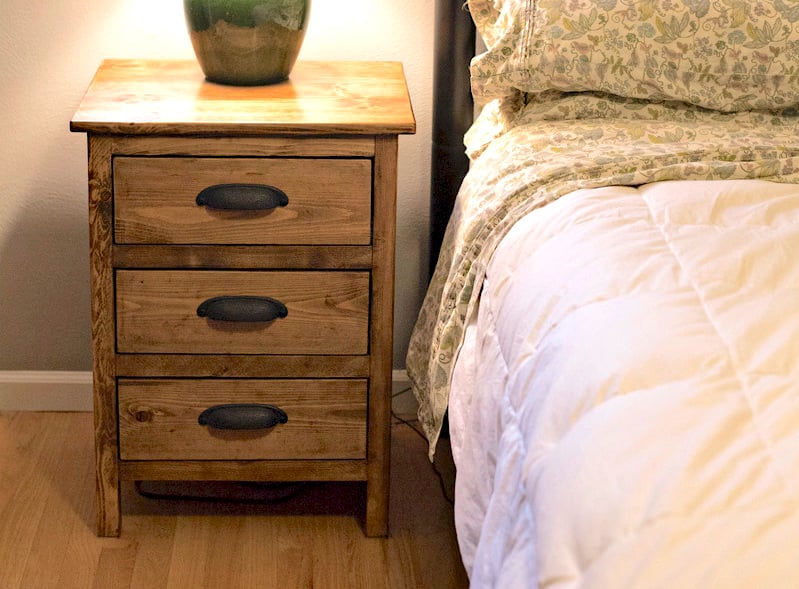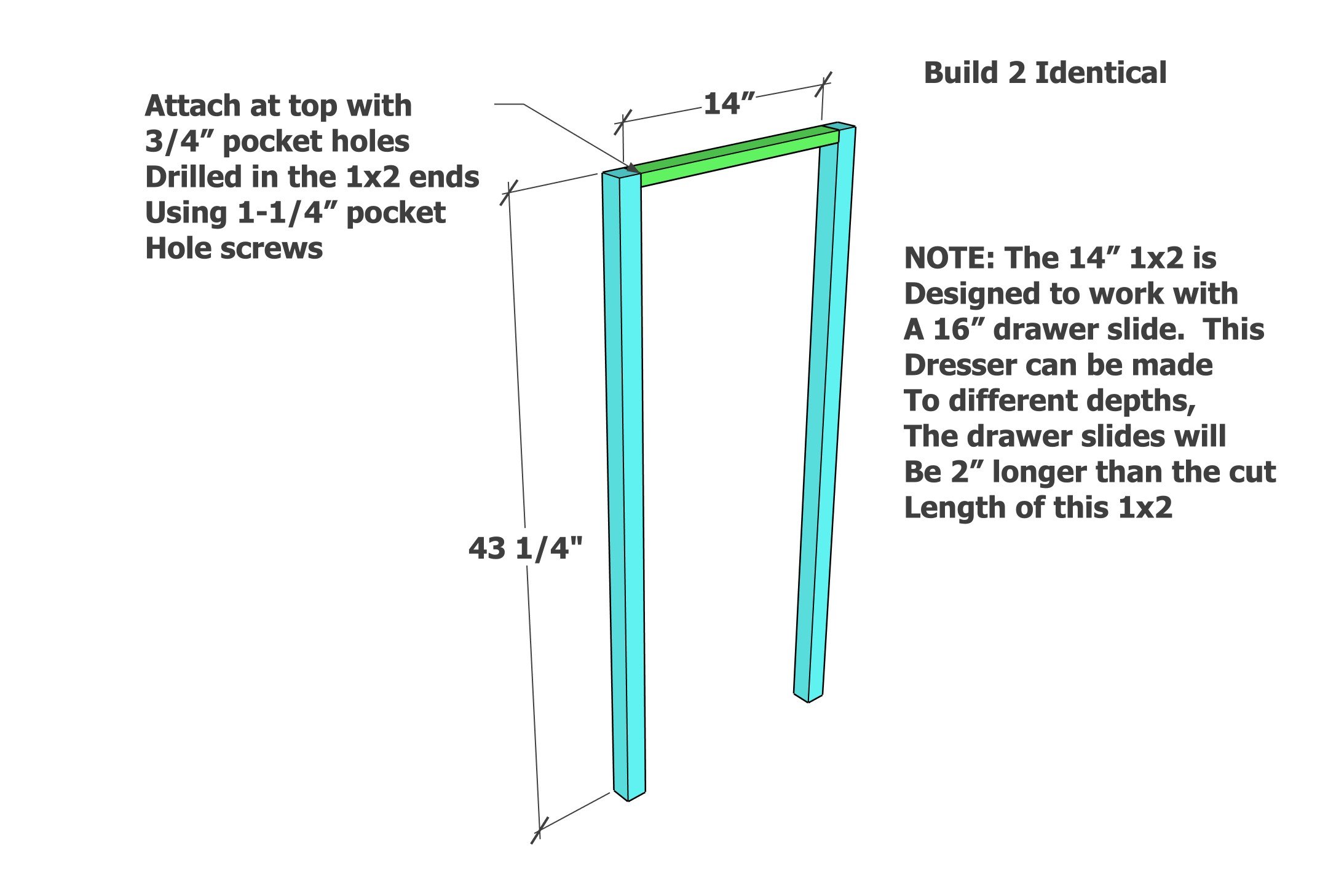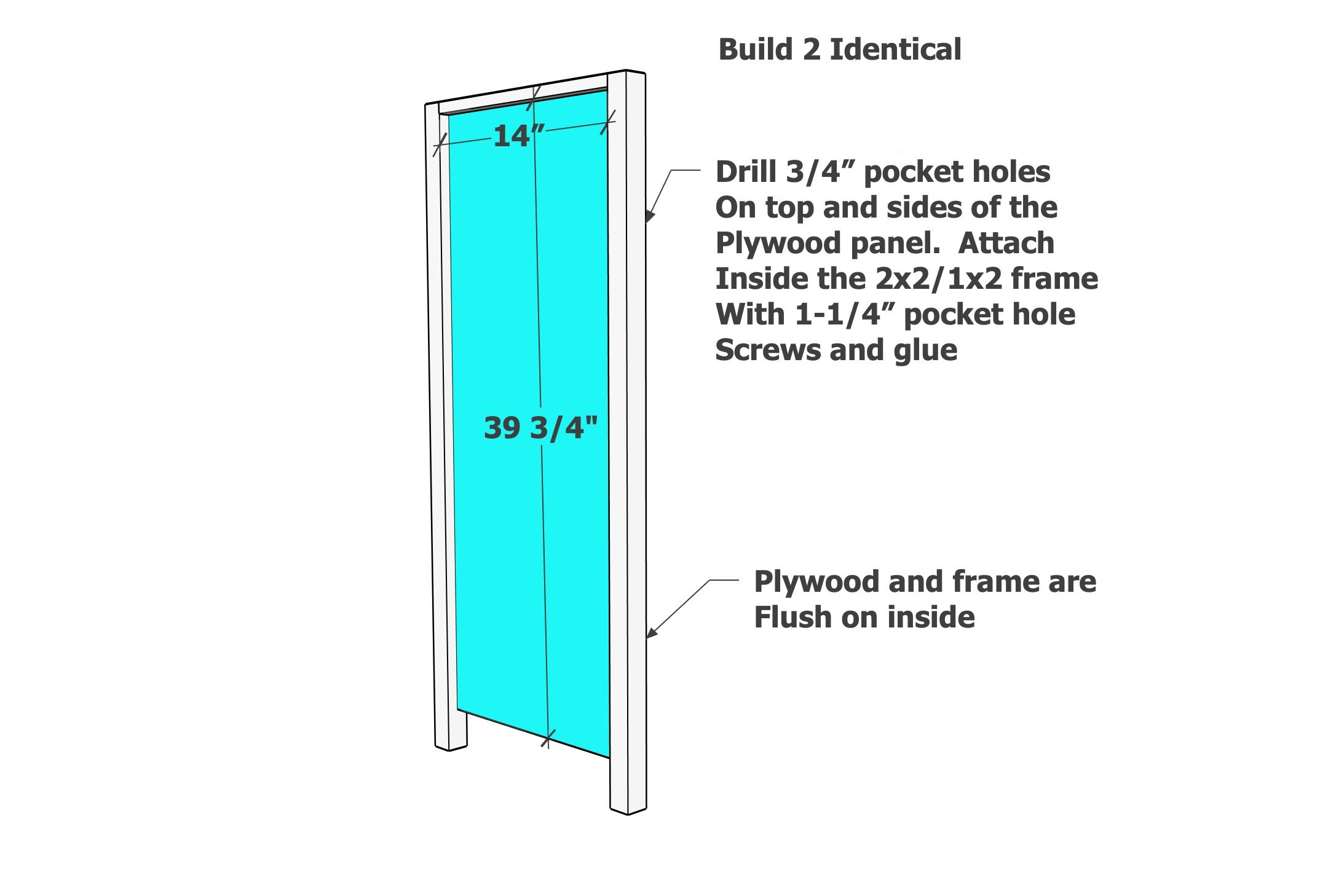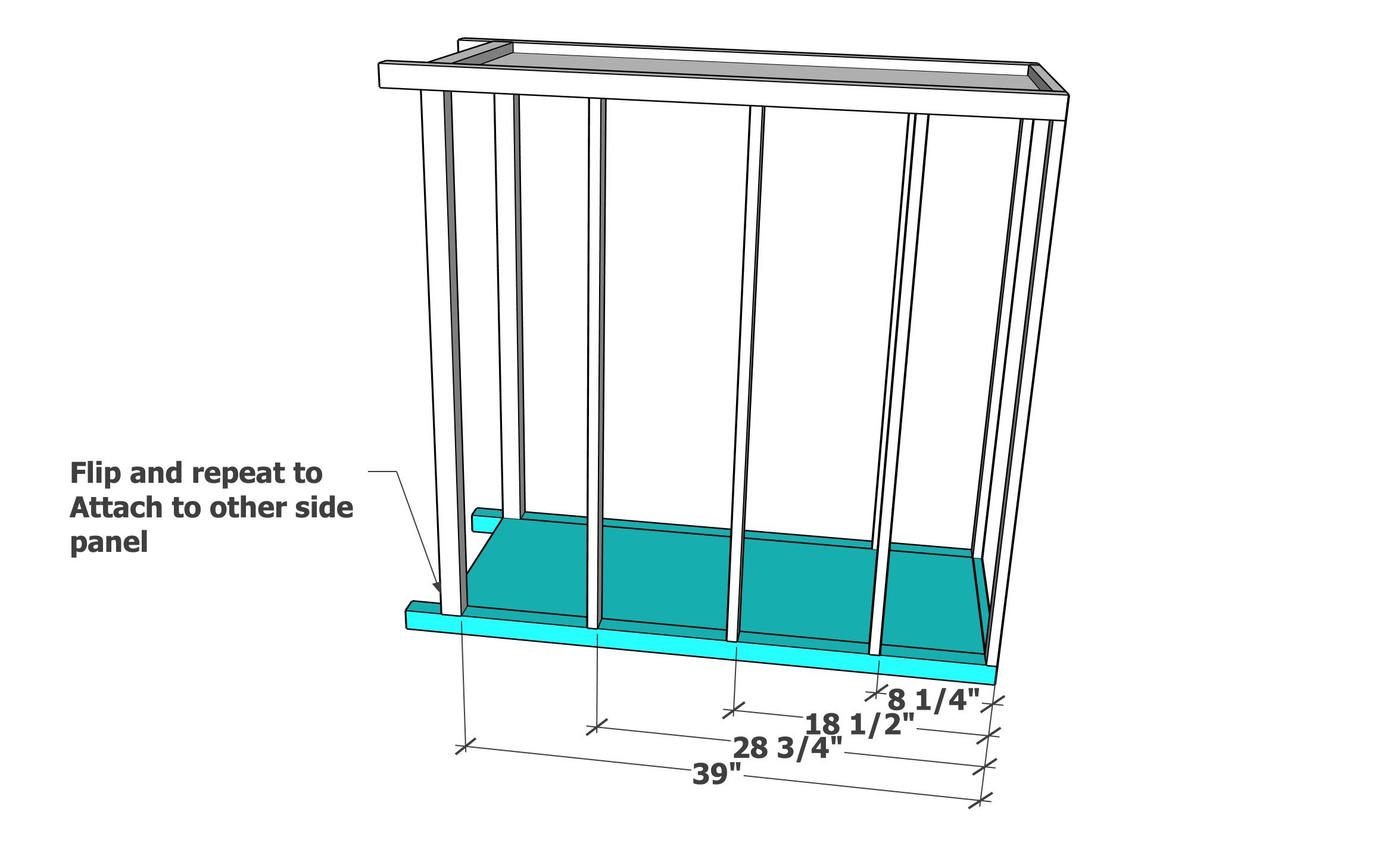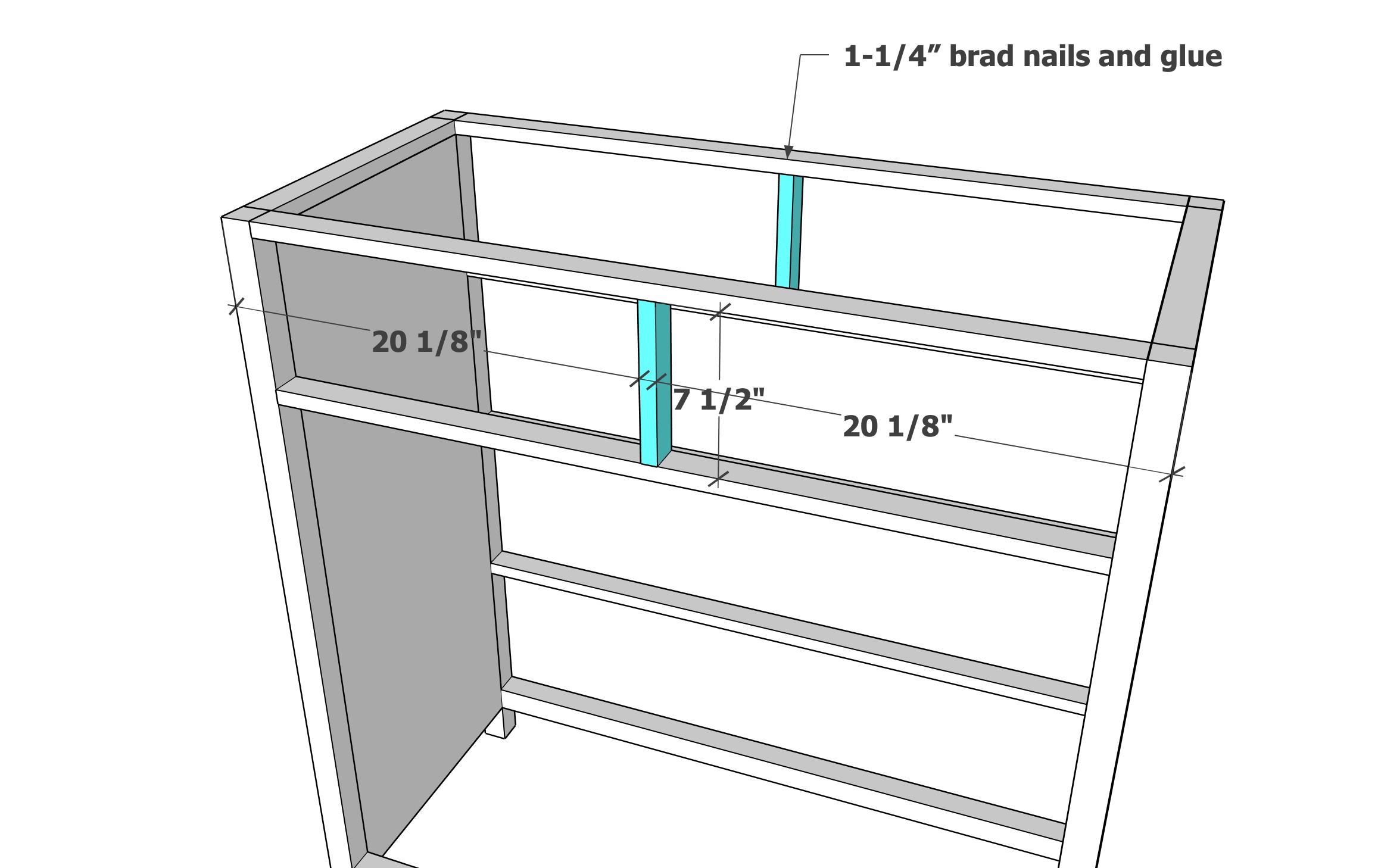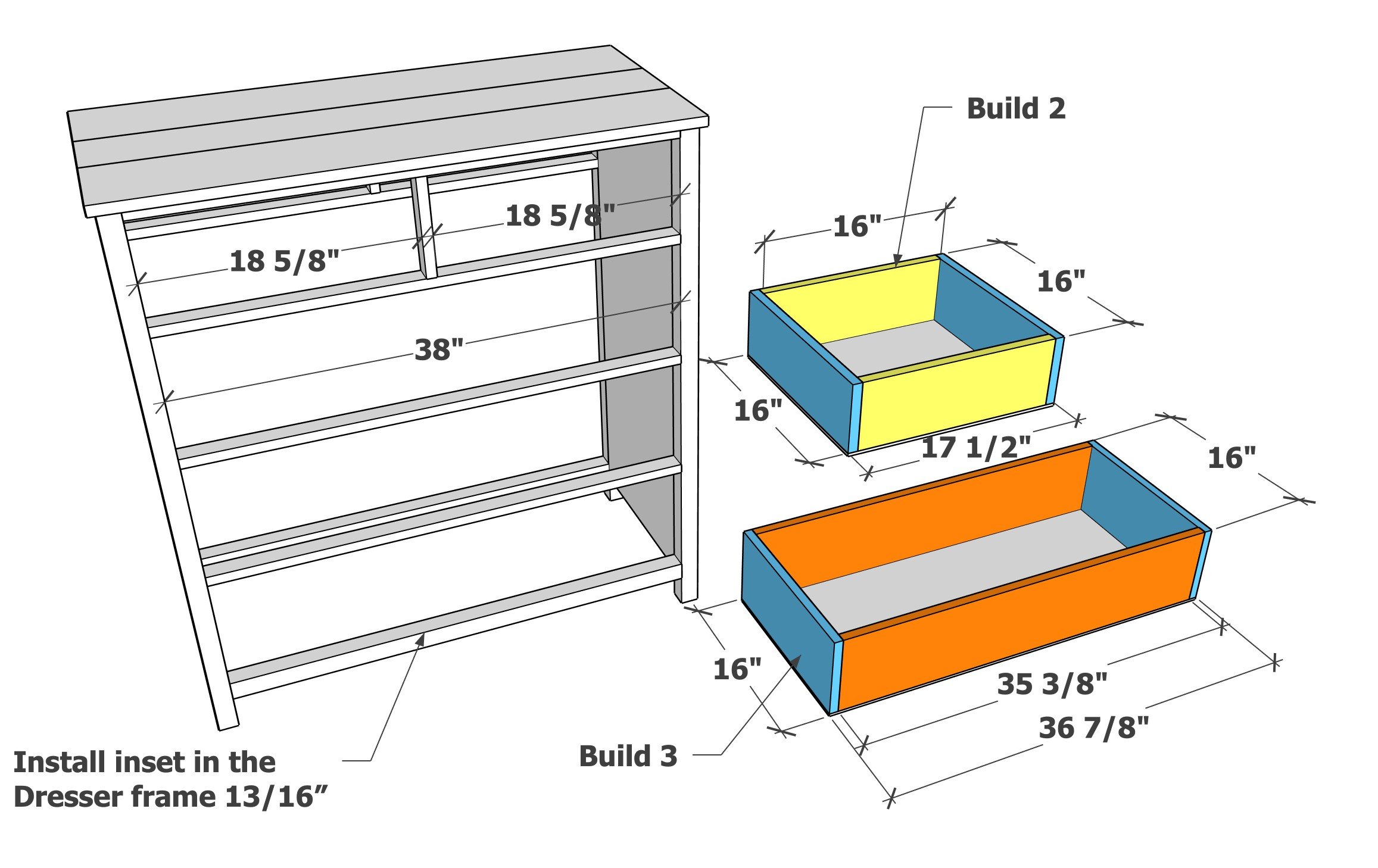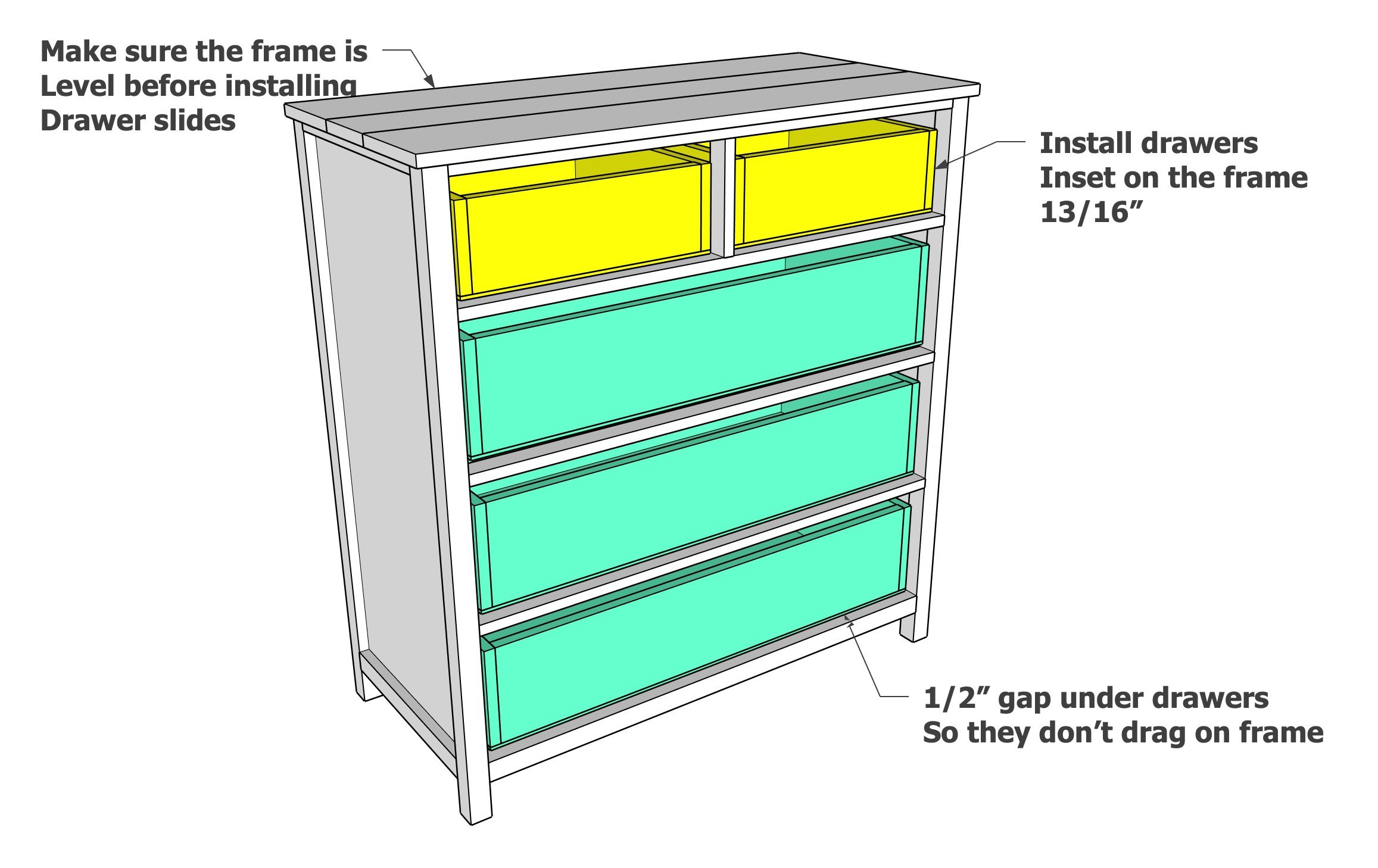
Free plans to build your own mid height dresser with five drawers. This solid wood dresser features two mid sized drawers and three large drawers, all in a compact footprint. The build style uses pine boards and half a sheet of 3/4" plywood. This is a free step by step plan with detailed diagrams, shopping and cut list - check it out and build today!

Pin For Later!
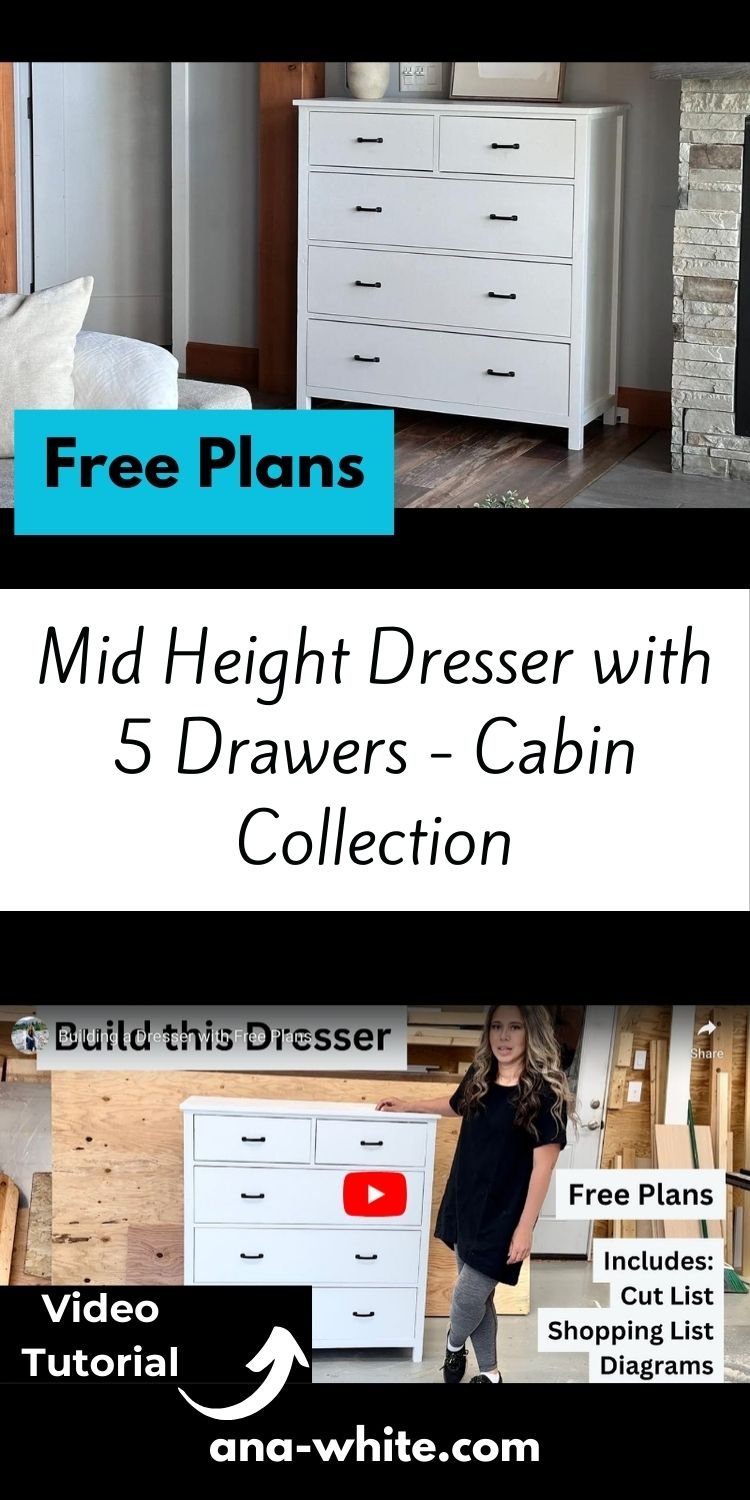
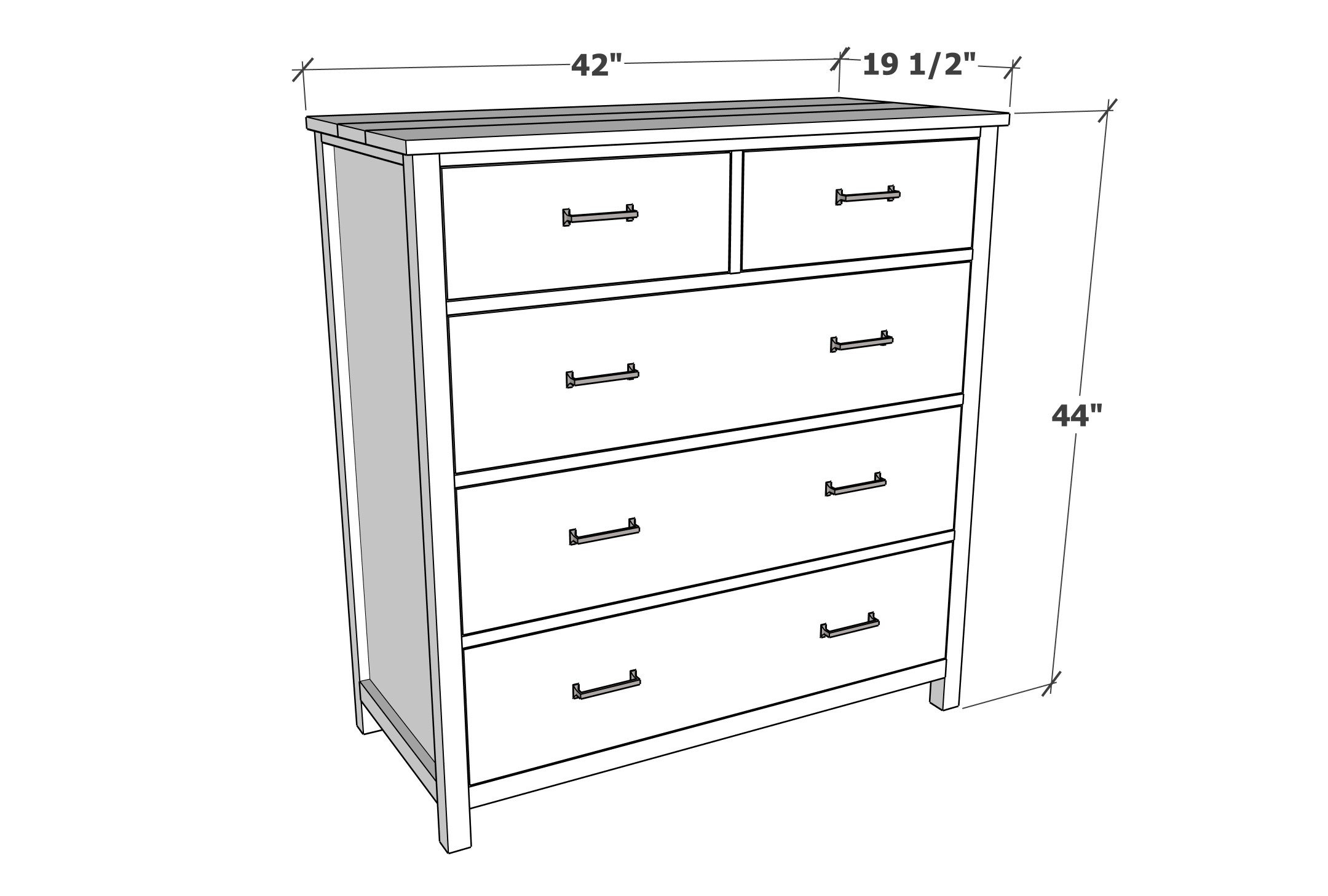
Preparation
- 3 - 2x2 @ 8 feet long
- 4 - 1x2 @ 8 feet long
- 1 - 3/4" plywood panel, 48" x 48"
- 12 linear board feet of 1x6
- 30 linear board feet of 1x8
- 10 linear board feet of 1x10
- 1 sheet of 1/4" plywood - I used underlayment (for drawer bottoms)
- 1-1/4" pocket hole screws (about 75)
- 2-1/2" pocket hole screws (I used 4)
- 1-1/4" and 3/4" brad nails
- wood glue
- 5 sets of 16" euro drawer slides (bottom corner mount, usually white in color)
- 8 handles or pulls
- edge banding in matching wood veneer (about 7 feet needed)
I used spruce for all 1x boards, I ripped a 2x6 into three pieces for the 2x2s since I couldn't find straight 2x2s.
Dresser Frame
- 4 - 2x2 @ 43-1/4" - legs
- 4 - 1x2 @ 14" - side panel top and trim
- 2 - 3/4" plywood @ 14" x 39-3/4" - side panels
- 2 - 2x2 @ 38" - front frame, bottom
- 6 - 1x2 @ 38" - front frame
- 2 - 1x2 @ 7-1/2" - front frame
- 1 - 3/4" plywood @ 17-1/2" x 42" - top
Drawers
- 8 - 1x6 @ 16" - small drawers sides (could also use 1x4 boards)
- 2 - 1/4" plywood @ 16" x 17-1/2" - smaller drawers bottom
- 2 - 1x8 @ 18-3/8" - drawer face, measure and cut to fit
- 6 - 1x8 @ 16 - larger drawer sides
- 6 - 1x8 @ 35-3/8" - larger drawers front and back
- 3 - 1/4" plywood @ 16" x 36-7/8"- larger drawer bottoms
- 3 - 1x10 @ 37-3/4" - drawer face, measure and cut to fit
After building the dresser in the video, I changed up the steps to make it easier to build. Please follow the steps here for the recommended building process.
For long term durability and more professional results, I recommend using a pocket hole joinery system for wood joints. Here is a video with tips for using a pocket hole jig:
Instructions
Step 1
Step 2
Step 4
Step 6
Step 7
Cut the top and apply edge banding to the outer edges with an iron. Here is a my video tutorial on applying edge banding.
NOTE: I used a 1x top in for my dresser, I used one 1x6 and two 1x8s joined edge to edge with pocket holes.
Place the top on a flat level surface. Then place the dresser frame on the top, flush to the back, with even overhangs on the front and sides.
Use the top to square up the dresser frame, making sure the overhangs are even on all sides, with frame lines running parallel to the top edges. This is very important step to get right.
Attach with 1-1/4" pocket hole screws through the 1x2s at the top.
Step 8
Step 9
Step 10
Measure and cut the drawer faces about 3/16" smaller than the opening. Use shims to hold in place and center, so there is an even gap on all sides.
Attach the drawer face to the drawer boxes with 1-1/4" brad nails, avoiding areas where hardware will be attached.
Remove the drawers and secure from inside with 1-1/4" screws (I used pocket hole screws). The hardware in the center will help hold the drawer face to the box, so I only place screws in the four outer corners.
I the drawer faces aren't setting right, the slides can be adjusted for a perfect fit.
Install the pulls to the drawer fronts. Here is the pulls that I used (very pleased with this hardware company, not sponsored by them)
I then sanded well with 120 grit sandpaper, working in the direction of the wood grain.
I then removed all sanding residue with a brush and then wiped clean with a damp, lint free cloth.


